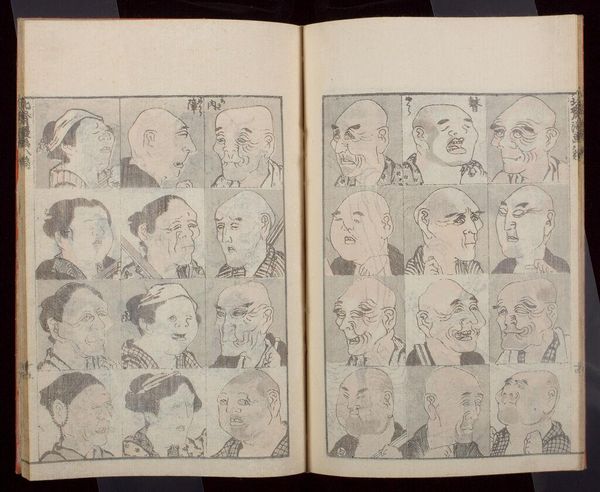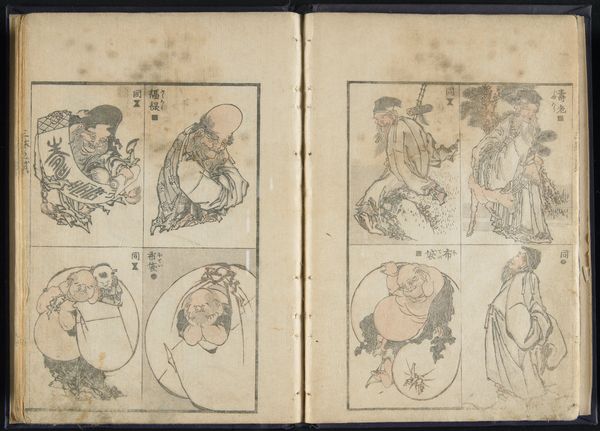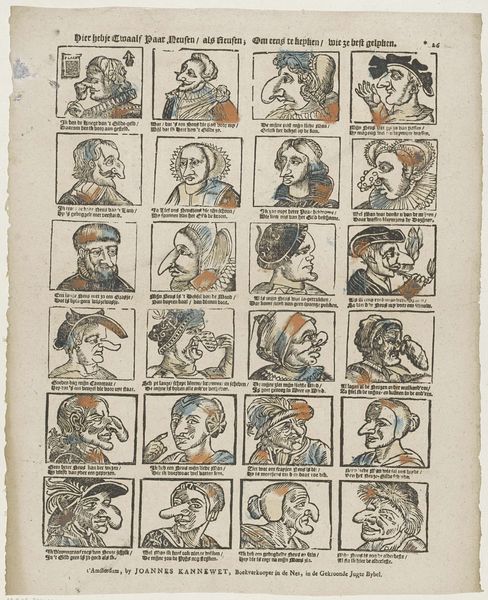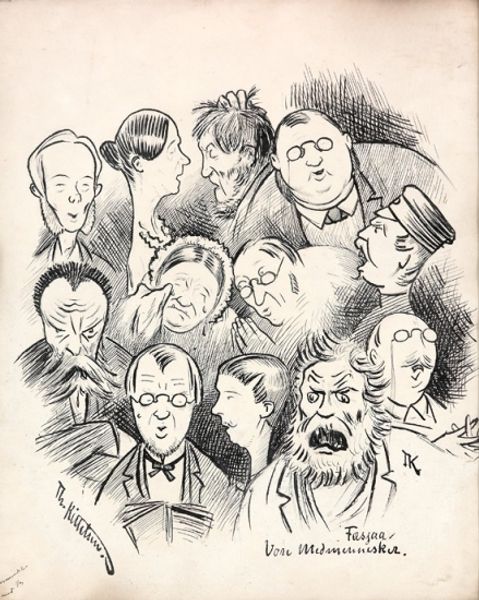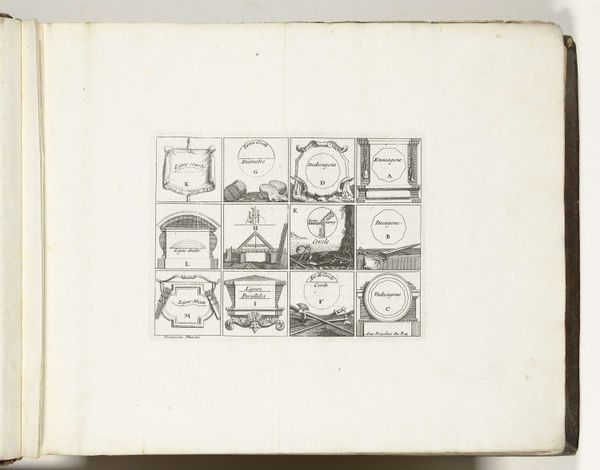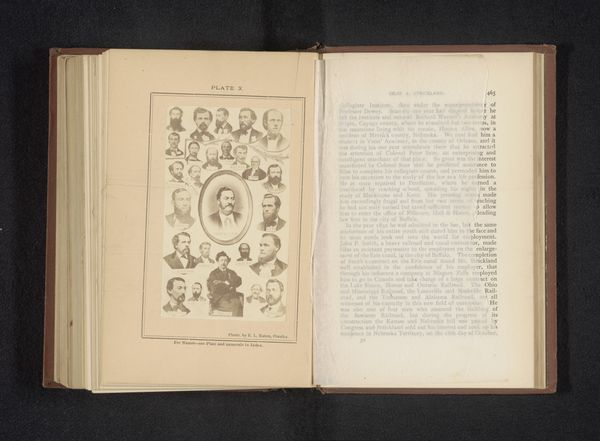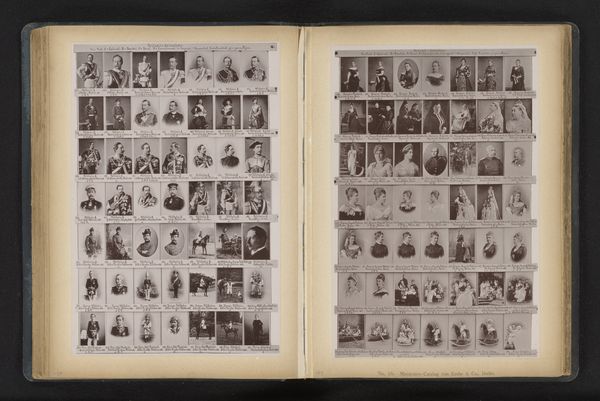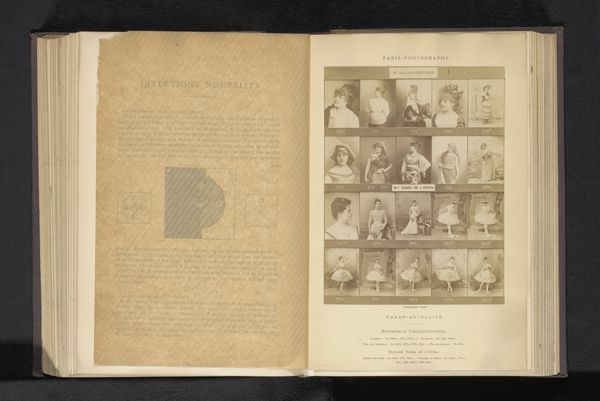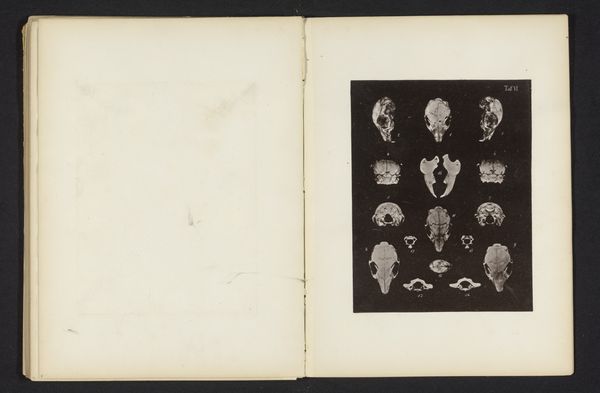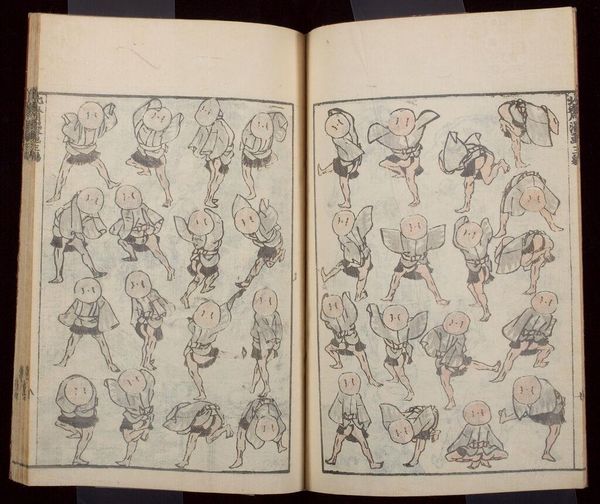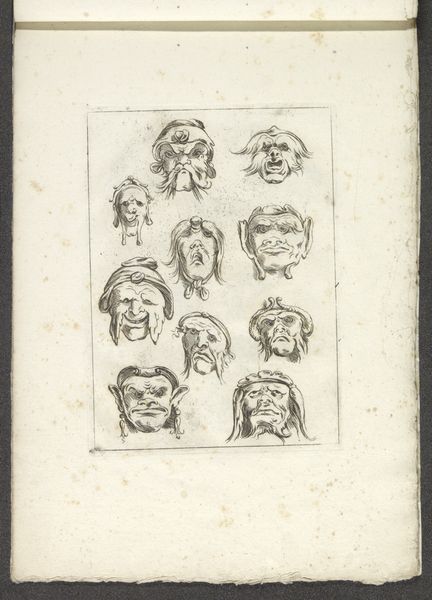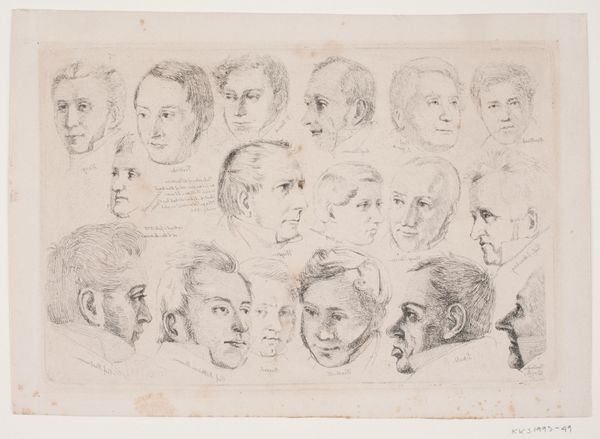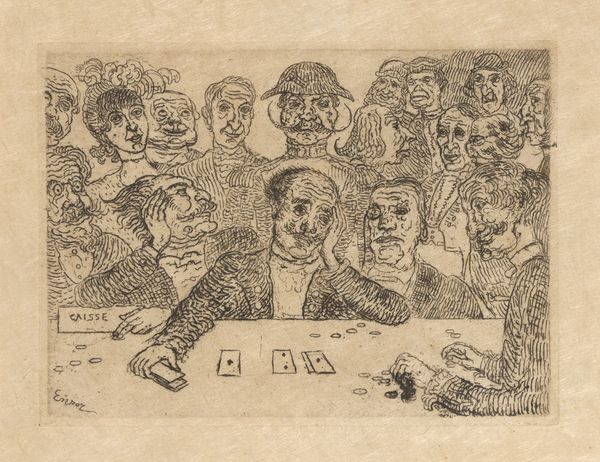
Transmitting the Spirit and Revealing the Form of Things- Hokusai's Sketchbooks 1818
0:00
0:00
drawing, print, paper, ink, woodblock-print
#
portrait
#
drawing
#
aged paper
#
toned paper
# print
#
book
#
asian-art
#
sketch book
#
ukiyo-e
#
paper
#
personal sketchbook
#
ink
#
woodblock-print
Dimensions: 9 1/4 x 6 7/16 x 1/2 in. (23.5 x 16.3 x 1.2 cm)
Copyright: Public Domain
Editor: This is "Transmitting the Spirit and Revealing the Form of Things- Hokusai's Sketchbooks" from 1818 by Katsushika Hokusai, at the Minneapolis Institute of Art. It's an intriguing set of woodblock prints on paper, a collection of head studies, and I’m fascinated by how much character Hokusai manages to convey with seemingly simple lines. What draws your attention in this piece? Curator: What strikes me is the intense labor involved in producing these images, from the initial drawings to the carving of the woodblocks. Ukiyo-e prints like these weren’t solitary creations. Consider the material processes, the specialized skills of the block cutters and printers; Hokusai was part of a commercial enterprise. This challenges our notions of singular artistic genius, wouldn't you say? Editor: Definitely! I hadn't really considered it as a collaborative process, I suppose I imagined Hokusai working alone on each page. So, seeing it as more of a collective effort… does that impact how we value the work, perhaps diminishing Hokusai’s individual contribution? Curator: Not diminish, but contextualize. How does mass production and distribution affect the cultural impact and accessibility of art? Think about the woodblock prints, relatively inexpensive and widely circulated. We must look beyond Hokusai’s hand to understand this. Each impression, made with ink on paper, is affected by external factors from the wood quality to atmospheric moisture that gives the impression on "aged paper." This brings the viewer much closer to the original creation in an aesthetic manner. Editor: That's really insightful! Considering the materiality and the production process makes me appreciate the artwork in a new way. Curator: Indeed. By examining the means of production and distribution, we can better understand the complex relationship between art, labor, and society in 19th-century Japan. This way, we also avoid creating artificial divisions between "high art" and popular craft!
Comments
No comments
Be the first to comment and join the conversation on the ultimate creative platform.
